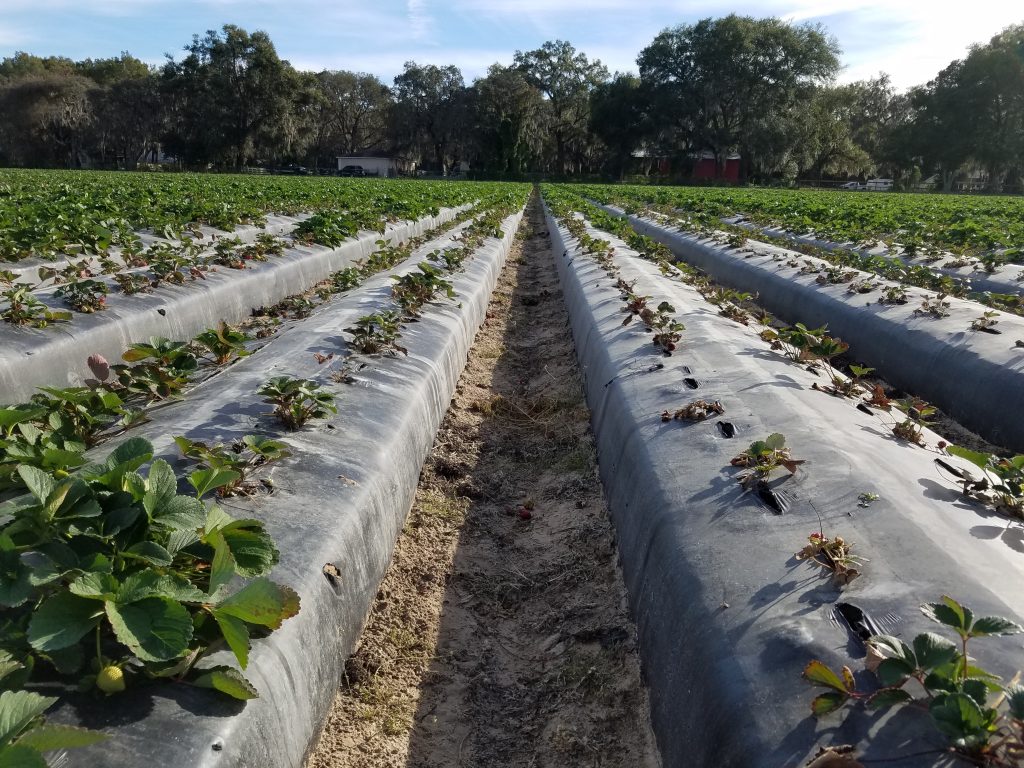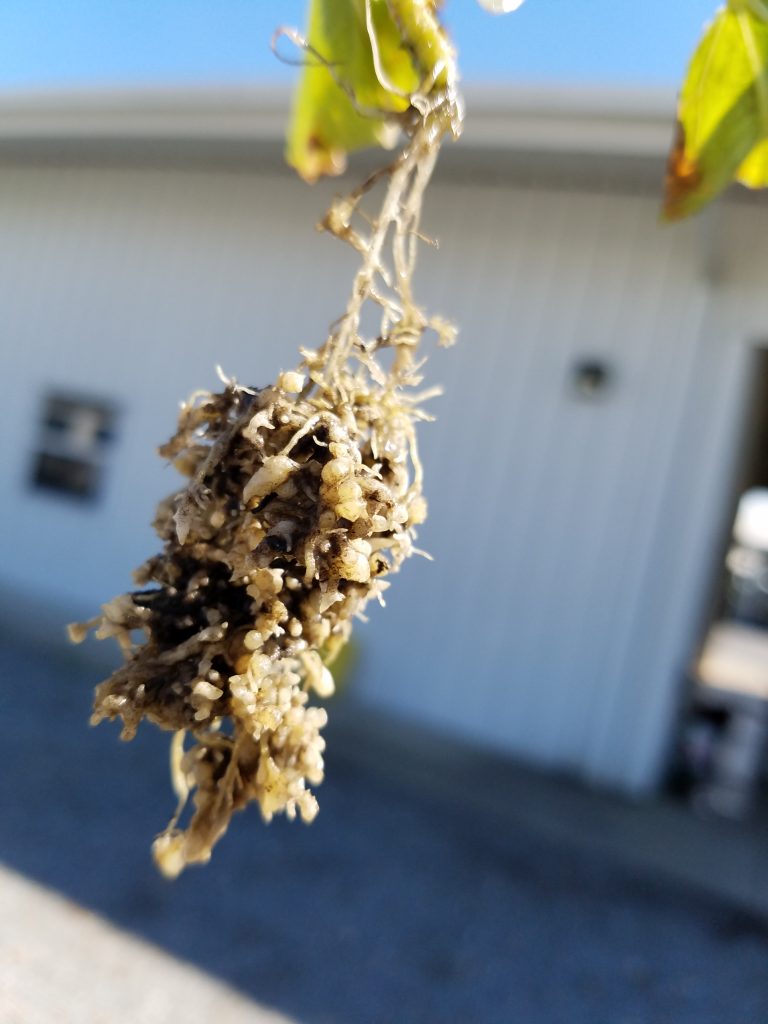By Johan Desaeger

Plant-parasitic nematodes are some of the most difficult pests or diseases that growers in Florida are facing. They are difficult to recognize, are often confused with other biotic or abiotic problems, and can cause total crop loss in many fruits and vegetables. This is especially true in Florida’s warm and sandy soils, where nematodes, such as root-knot (Meloidogyne spp.) and sting (Belonolaimus longicaudatus), can build up rapidly to high and damaging levels. In Florida, much more than in any other state in the country, managing nematodes is not an option, but a must.
For over 50 years, soil fumigation with methyl bromide was the preferred method to manage soilborne pests and diseases, including plant-parasitic nematodes, in a wide range of horticultural crops. Because methyl bromide was categorized as a Class I ozone-depleting substance in the 1990s, its production and use was phased out gradually. Currently, methyl bromide in the United States is practically gone.
ALTERNATIVE FUMIGANTS
Since the phaseout, a significant amount of research has been dedicated to finding alternative fumigants to methyl bromide. Much of this research was focused on evaluating existing fumigants that had limited usage as long as methyl bromide was available, such as 1,3-D (Telone), metam (Vapam/KPam) and chloropicrin (Pic), as well as some new fumigants, such as dimethyl disulfide (Paladin) and allyl isothiocyanate (Dominus).
The main disadvantage that all alternative fumigants have compared to methyl bromide is their lower vapor pressure (volatility), which means that uniform soil distribution is more difficult to attain. For this reason, methyl bromide replacements often have not provided the same level of nematode control, and nematode management in Florida agriculture has become more challenging.
NEW NEMATICIDES
While the loss of methyl bromide has raised concern among growers, it also has created
new opportunities for crop-protection companies. Many companies are now working
on finding new nematicides, and this is in large part due to the loss of methyl bromide and
other nematicides (e.g., Temik). The increasing regulatory pressure on pesticides has affected nematicides
more than other products. Due to their high toxicity and environmental
risk, nematicides were usually
classified as restricted-use pesticides, which explains their often-bad
reputation with the public.
With the recent spike in nematicide research, a number of new products (Nimitz, Velum and Majestene) have recently entered the market, and more new products are expected in the near future. This is a welcome new trend for growers in Florida and elsewhere, who have been deprived of new nematicides for decades. The new nematicides have a much improved human and environmental safety profile, and unlike the older nematicides, they more specifically target nematodes. Therefore, they should not be considered fumigant replacements. Unlike fumigants, which will control all or most soilborne pests and diseases, the new products will only target nematodes, and additional measures need to be taken to manage soil diseases and weeds.

Ideally, nematode management should adopt a year-round approach, from seedling production, through field preparation and while growing the crop, to off-season nematode management. Field preparation often includes soil fumigation in Florida, but can also include compost or other organic amendment applications. Non-fumigant nematicides are typically applied shortly before or at planting of the crop. There are limited options, including one older product, Vydate (oxamyl), and the three newer products, Nimitz (fluensulfone, only pre-plant), Velum (fluopyram) and Majestene (Burkholderia spp., a biological).
OTHER
STRATEGIES
For certain crops, such as tomato, root-knot nematode-resistant cultivars are
available and can be a good option. Crop destruction practices, such as end-of-season
nematicide applications or removing nematode-infested roots from the field, can
also help to reduce nematode levels. During the off-season, frequent tillage
can reduce nematode populations. In heavily infested fields, deep injection of
fumigants can be done to target nematodes that hide below the hardpan.
Cover crops are another excellent tool to include in a nematode-management plan. Cover crops can have multiple benefits, from soil improvement and weed suppression to disease and nematode control. Florida’s climate allows for a wide range of cover crops to be planted. A common summer cover crop in Florida is sunn hemp (Crotalaria juncea), which not only fixes nitrogen in the soil, but is also a poor host for many nematodes, including the dreaded root-knot nematode.
CONCLUSION
The ban on methyl bromide has certainly made nematode management much more
challenging. The days of a single-shot solution to control nematodes are over,
and more integrated nematode management programs are needed. Nematodes will not
go away, and will likely increase with more intensive land use and warmer
weather. Nematologists at the University of Florida will continue the battle
against these pesky and secretive pests, and to develop effective and
sustainable nematode programs to help Florida growers.
Johan Desaeger is an assistant professor at the University of Florida Institute of Food and Agricultural Sciences Gulf Coast Research and Education Center in Wimauma.
This article was featured in the May issue of VSCNews magazine. To receive future issues of VSCNews magazine, click here.
This research is being conducted at the University of Florida’s Gulf Coast Research and Education Center (GCREC). Come out and see first-hand all of the great research being done at the GCREC, and speak one on one with the researchers at the 2019 Florida Ag Expo!
Share this Post









